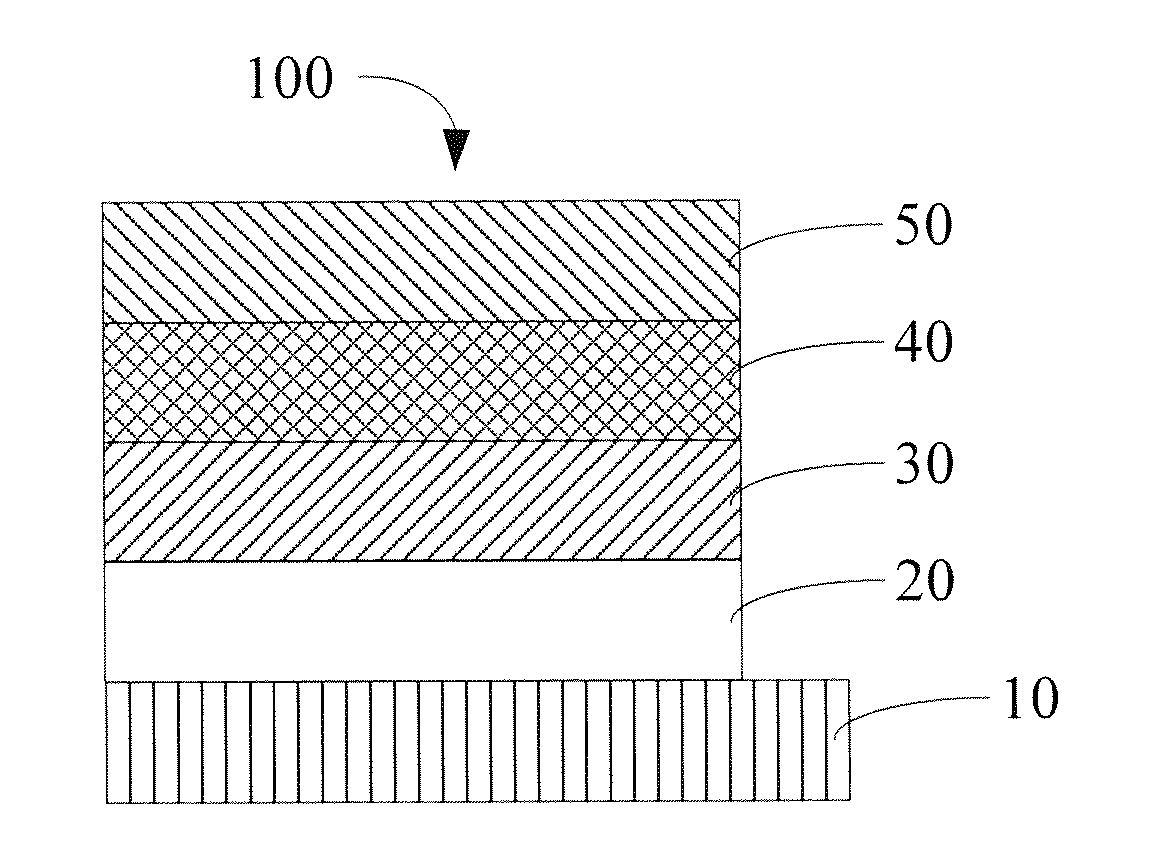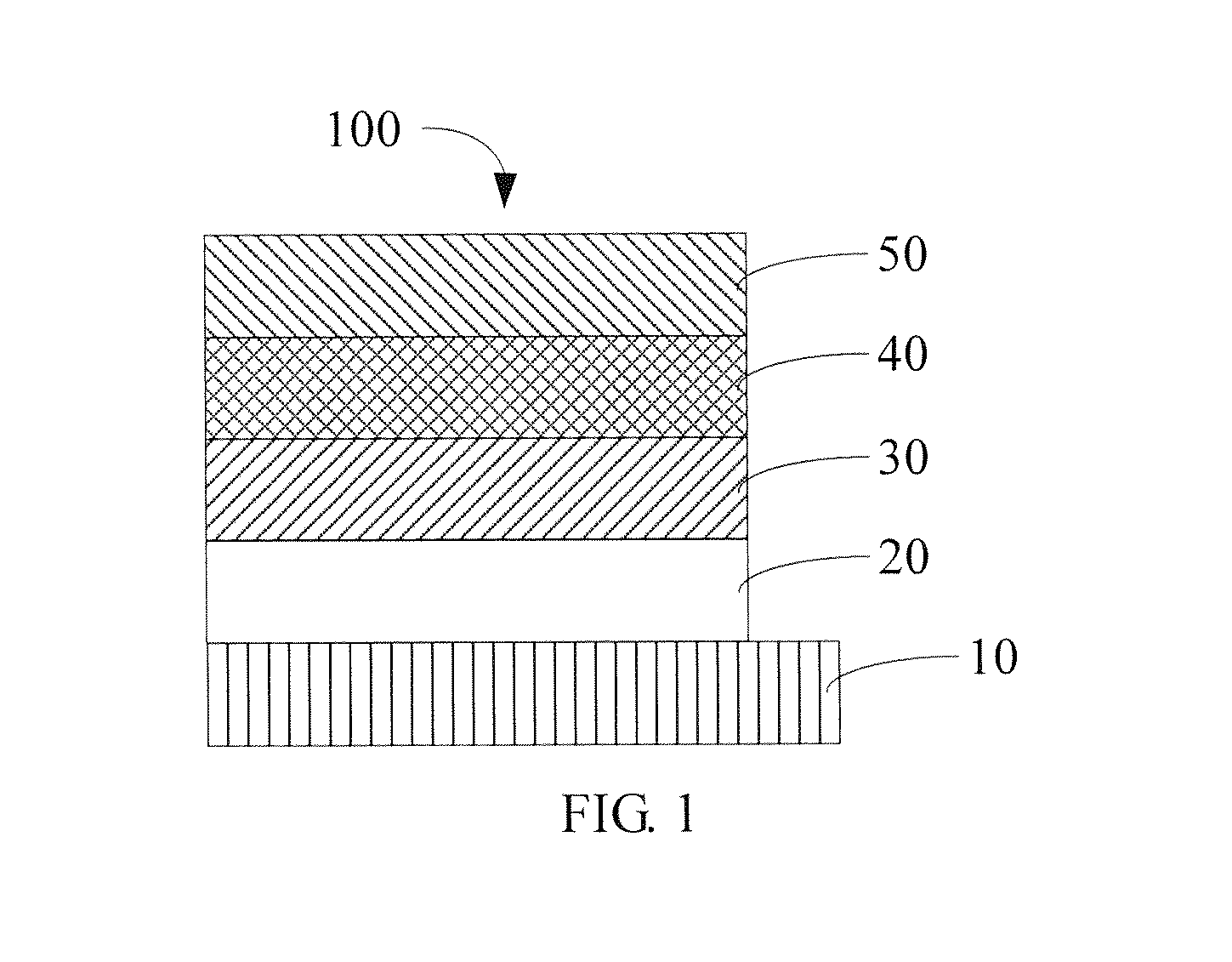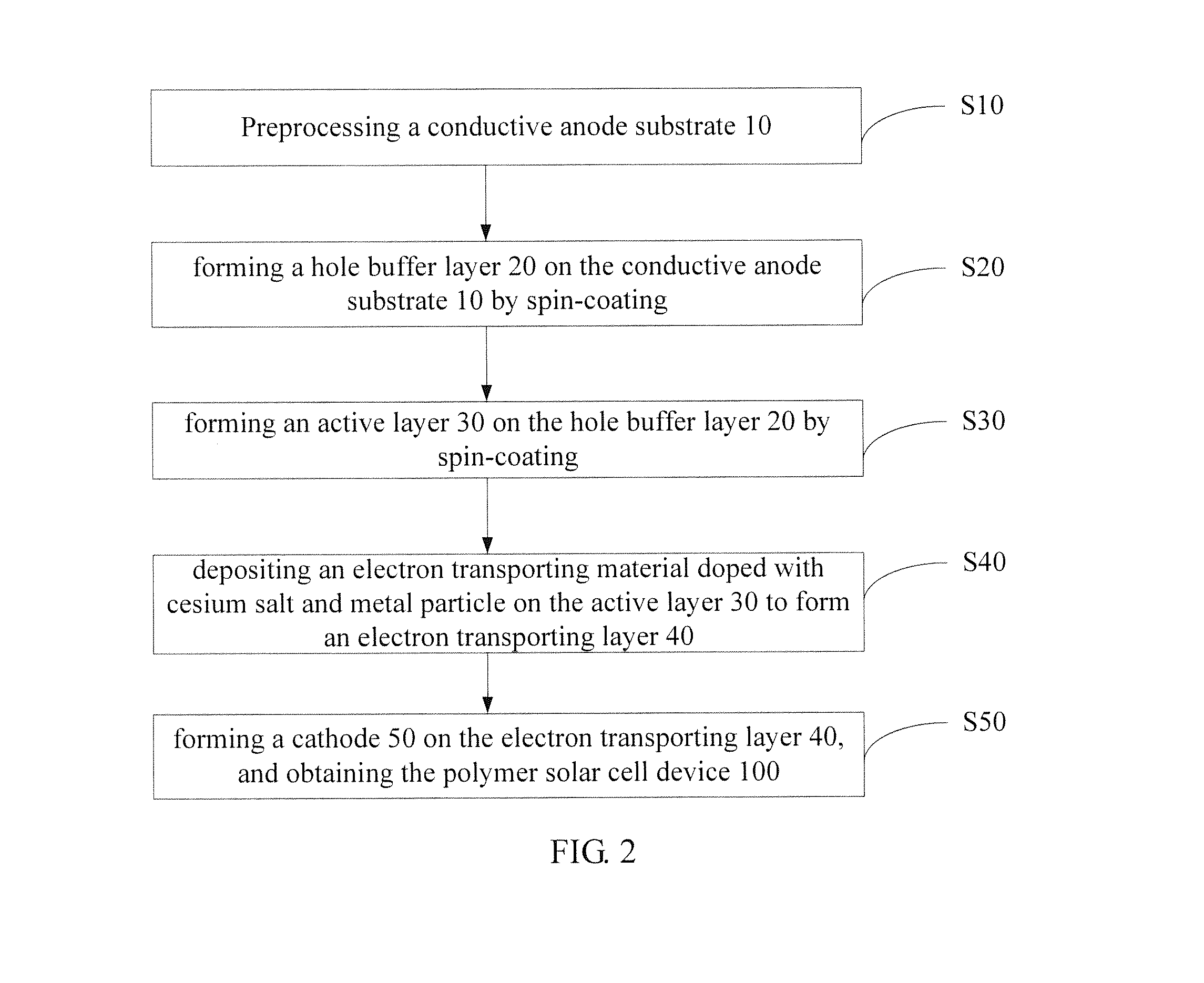Polymer solar cell device and method for preparing same
a solar cell and polymer technology, applied in the field of solar cells, can solve the problems of affecting the energy conversion efficiency, the thickness of the buffer layer is needed, and the open circuit voltage and photoelectric conversion efficiency of solar cells is very low, so as to facilitate the injection of electrons, reduce the barrier of the electrons on the interface, and improve the electron transport rate
- Summary
- Abstract
- Description
- Claims
- Application Information
AI Technical Summary
Benefits of technology
Problems solved by technology
Method used
Image
Examples
example 1
[0084]The embodiment of the polymer solar cell device has a structure of ITO / (PEDOT:PSS) / (MEH-PPV:PCBM) / (Bhpen:Cs2CO3:Ag) / Al.
[0085]The preparation process of the polymer solar cell device is described as follows:
[0086]The ITO was photoetched and cut into pieces with required size, the ITO was then treated using ultrasonic sequentially in detergent, deionized water, acetone, ethanol, and isopropyl alcohol each for 15 minutes to remove organic pollutants on the surface of the glass. The ITO was treated with oxygen plasma for 5 minutes after cleaning; the power was 30 W. A solution of PEDOT and PSS was spin-coated on the ITO, a mass ratio of PEDOT to PSS was 6:1, a mass percent of the solution was 1.3%; and then heated at a temperature of 200° C. for 30 minutes, a hole buffer layer with a thickness of 40 nm was formed. Then, under a nitrogen atmosphere, a chlorobenzene solution of MEH-PPV and PCBM was spin-coated on the hole buffer layer, a mass ratio of MEH-PPV to PCBM was 1:3, a tota...
example 2
[0092]The embodiment of the polymer solar cell device has a structure of IZO / (PEDOT:PSS) / (MDMO-PPV:PCBM) / (PBD:CsF:Al) / Ag.
[0093]The preparation process is described as follows:
[0094]The IZO was photoetched and cut into pieces with required size, the IZO was then treated using ultrasonic sequentially in detergent, deionized water, acetone, ethanol, and isopropyl alcohol each for 15 minutes to remove organic pollutants on the surface of the glass, respectively. The IZO was treated with oxygen plasma for 5 minutes after cleaning; the power was 30 W. A solution of PEDOT and PSS was spin-coated on the IZO, a mass ratio of PEDOT to PSS was 2:1, a mass percent of the solution was 5%; and then heated at a temperature of 100° C. for 60 minutes, a hole buffer layer with a thickness of 20 nm was formed. Then, under an argon atmosphere, an xylene solution of MEH-PPV and PCBM was spin-coated on the hole buffer layer, a mass ratio of MEH-PPV to PCBM was 1:4, a total concentration of the xylene sol...
example 3
[0095]The embodiment of the polymer solar cell device has a structure of AZO / (PEDOT:PSS) / (P3HT:PCBM) / (TPBi:CsCl:Au) / Pt.
[0096]The preparation process is described as follows:
[0097]The AZO was photoetched and cut into pieces with required size, the AZO was then treated using ultrasonic sequentially in detergent, deionized water, acetone, ethanol, and isopropyl alcohol each for 15 minutes to remove organic pollutants on the surface of the glass, respectively. The AZO was treated with UV-ozone treatment for 15 minutes after cleaning. A solution of PEDOT and PSS was spin-coated on the AZO, a mass ratio of PEDOT to PSS was 4:1, a mass percent of the solution was 1%; and then heated at a temperature of 200° C. for 15 minutes, a hole buffer layer with a thickness of 80 nm was formed. Then, under a helium atmosphere, an xylene solution of P3HT and PCBM was spin-coated on the hole buffer layer, a mass ratio of P3HT to PCBM was 1:0.8, a total concentration of the xylene solution was 30 mg / mL, ...
PUM
| Property | Measurement | Unit |
|---|---|---|
| particle size | aaaaa | aaaaa |
| thickness | aaaaa | aaaaa |
| mass ratio | aaaaa | aaaaa |
Abstract
Description
Claims
Application Information
 Login to View More
Login to View More - R&D
- Intellectual Property
- Life Sciences
- Materials
- Tech Scout
- Unparalleled Data Quality
- Higher Quality Content
- 60% Fewer Hallucinations
Browse by: Latest US Patents, China's latest patents, Technical Efficacy Thesaurus, Application Domain, Technology Topic, Popular Technical Reports.
© 2025 PatSnap. All rights reserved.Legal|Privacy policy|Modern Slavery Act Transparency Statement|Sitemap|About US| Contact US: help@patsnap.com



